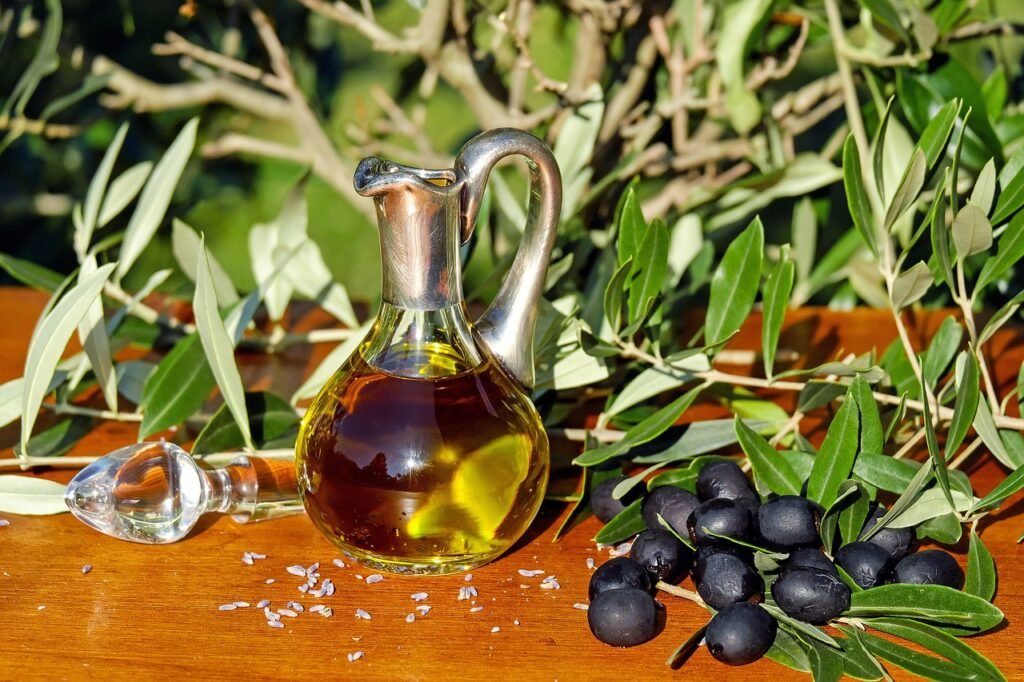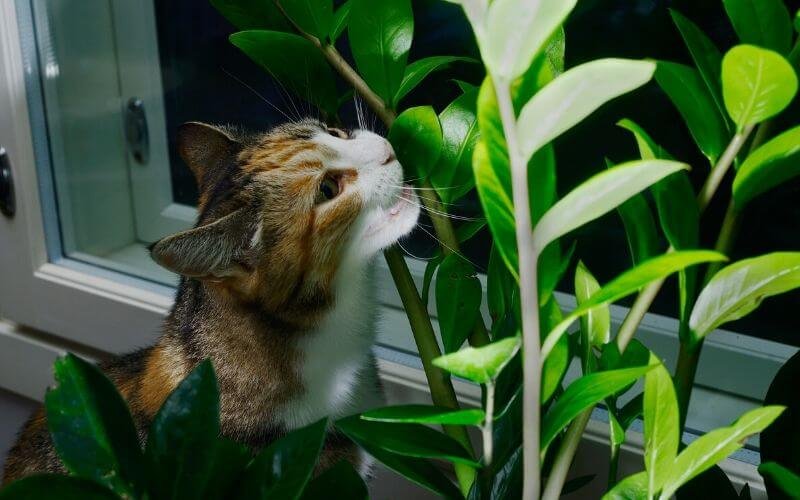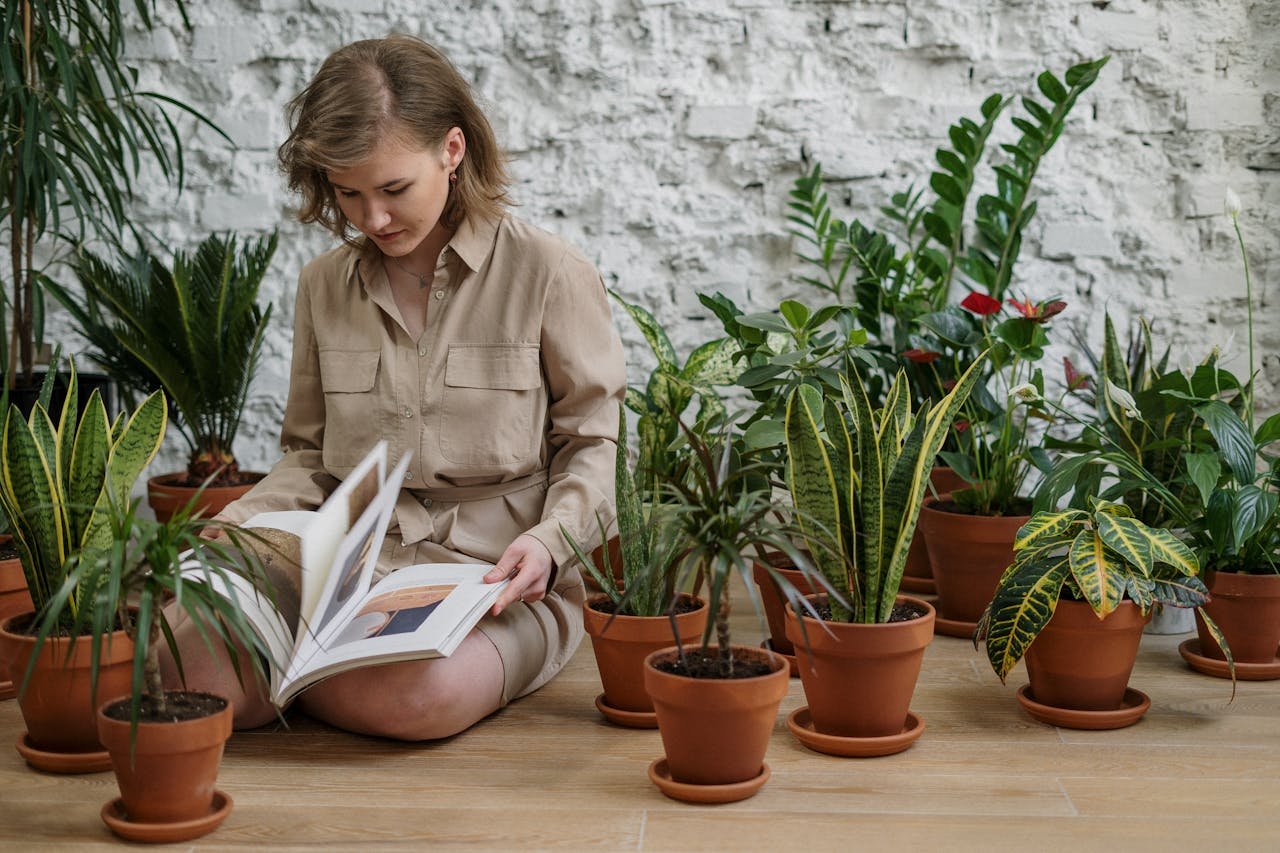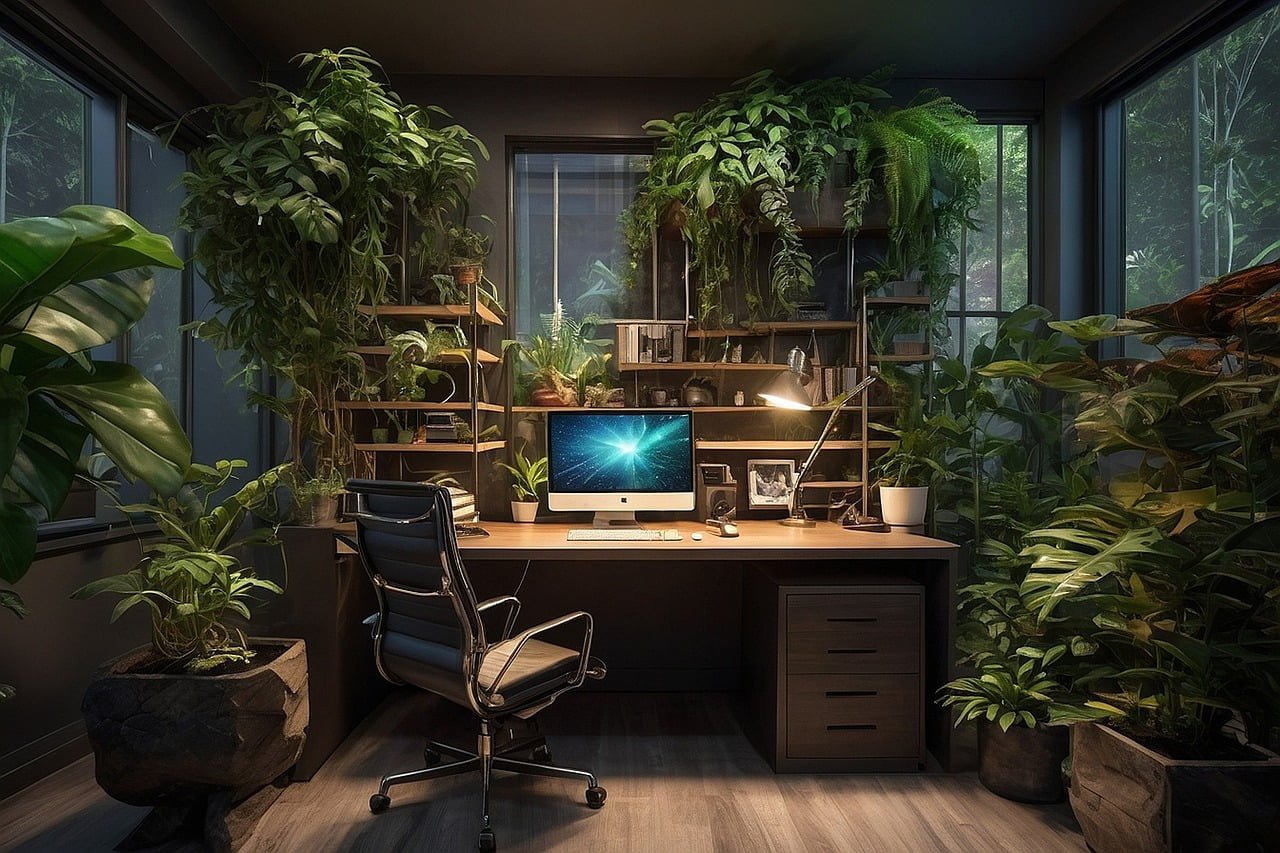
Here’s an overview:
- Choosing the Right Olive Tree Variety
- Selecting the Ideal Container
- Optimal Growing Conditions for Indoor Olive Trees
- Watering and Fertilizing Tips
- Pruning and Training Techniques
- Dealing with Common Pests and Diseases
- Harvesting and Curing Olives
- Creating a Mediterranean-inspired Indoor Garden
- Benefits of Growing Olive Trees Indoors
- FAQs and Troubleshooting Tips
Choosing the Right Olive Tree Variety
Growing Olive tree indoor plant: When selecting an olive tree variety for indoor cultivation, it is essential to consider factors such as space, light conditions, and personal preferences. Here are some key points to keep in mind while choosing the right olive tree variety:
Thank you for reading this post, don't forget to subscribe!- Space: Consider the available space in your home. Some olive tree varieties, like the Arbequina or the Picholine, are more compact and suitable for smaller spaces, while others, such as the Frantoio or the Koroneiki, may require more room to grow.
- Light: Olive trees are sun-loving plants and require at least six hours of direct sunlight per day. If you have a sunny window or a spot with ample natural light, you can opt for sun-loving varieties like the Leccino or the Manzanilla. Alternatively, if natural light is limited, consider varieties that are more tolerant of shade, such as the Mission olive tree.
- Growing habits: Different olive tree varieties have varying growth habits. Some are more bush-like, while others are more tree-like. Consider the desired aesthetic and growth habit when selecting a variety. For example, the Arbosana olive tree is known for its elegant, upright growth, making it a great choice for a more formal setting.
- Harvest time: Olive tree varieties have different maturation times, so consider when you would like to harvest your olives. Some varieties, like the Picual or the Hojiblanca, are early maturing and produce fruit in the fall, while others, like the Empeltre, are late maturing and bear fruit in the winter months.
By considering these factors and doing some research on the various olive tree varieties available, you can select the right one that suits your indoor space and preferences. Whether you prioritize compact size, sun exposure, specific growth habits, or harvest time, there is an olive tree variety out there that will thrive in your home environment.
Selecting the Ideal Container
When choosing a container for your indoor olive tree, there are a few key factors to consider to ensure the tree’s health and growth:
- Size: Make sure the container is large enough for the olive tree’s roots to spread out comfortably. A good rule of thumb is to select a pot that is 2-3 times the size of the tree’s root ball.
- Material: Opt for containers made of breathable materials like terracotta or ceramic to allow proper airflow to the roots. This will help prevent overwatering and root rot.
- Drainage: Ensure the container has drainage holes at the bottom to prevent waterlogging, which can lead to root rot. If the container you choose doesn’t have drainage holes, consider drilling some yourself.
- Aesthetics: Select a container that complements your indoor space and enhances the overall decor. Consider the style, color, and shape of the container to create a visually pleasing display.
- Mobility: If you plan to move your olive tree around, choose a container with built-in casters or consider placing a wheeled plant caddy underneath for easy mobility.
- Stability: Ensure the container is sturdy and stable to support the weight of the tree and prevent it from toppling over. You may want to add some rocks or weights at the bottom for extra stability.
By considering these factors when selecting the ideal container for your indoor olive tree, you can create an environment where the tree can thrive and add beauty to your home.
Optimal Growing Conditions for Olive tree indoor plant
When it comes to indoor olive trees, providing the right growing conditions is essential for their health and vitality. Here are some key factors to consider:
- Light: Make sure your indoor olive tree receives plenty of sunlight, preferably about 6-8 hours of direct sunlight daily. If natural light is limited, you can supplement with grow lights to ensure optimal growth.
- Temperature: Olive trees prefer moderate temperatures between 60-80°F (15-27°C). Avoid placing your tree near drafts or heating/cooling vents as extreme temperature fluctuations can stress the plant.
- Humidity: Indoor olive trees thrive in moderate humidity levels. Aim for a humidity range of 40-60%. To increase humidity, you can use a humidifier or place a water-filled tray with pebbles near the plant.
- Watering: Allow the soil to dry out slightly between watering sessions, as olive trees do not like sitting in soggy soil. Check the top inch of soil, and when it feels dry to the touch, water the plant thoroughly.
- Soil: Well-draining soil is crucial for indoor olive trees. A mix of potting soil, sand, and perlite works well to ensure proper drainage and root aeration.
- Fertilization: During the growing season (spring and summer), feed your olive tree with a balanced fertilizer every 4-6 weeks. Reduce fertilization during fall and winter when the plant is dormant.
By paying attention to these growing conditions, you can create an ideal environment for your indoor olive tree to thrive and adorn your living space with its lush green foliage.
Watering and Fertilizing Tips
When it comes to caring for indoor olive trees, proper watering and fertilizing are crucial for their health and growth. Here are some tips to help you ensure your olive tree thrives indoors:
- Watering:
- Frequency: Olive trees prefer to have their soil dry out slightly between watering. I typically water my indoor olive tree every 7-10 days during the growing season, reducing the frequency to every 2-3 weeks in winter.
- Amount: When watering, ensure that water seeps out from the bottom of the pot to guarantee thorough saturation. However, avoid waterlogging the soil as it can lead to root rot.
- Fertilizing:
- Frequency: During the growing season in spring and summer, I fertilize my indoor olive tree with a balanced, water-soluble fertilizer every 4-6 weeks. In autumn and winter, I reduce fertilization to every 2-3 months.
- Type: Opt for a fertilizer specifically formulated for trees or shrubs, and ensure it is diluted to half the recommended strength to prevent nutrient burn.
Remember that each olive tree may have slightly different watering and fertilizing needs based on factors like humidity levels and the size of the pot. It’s essential to monitor your tree’s response to these care practices and adjust as needed. By providing adequate water and nutrients, your indoor olive tree can thrive and beautify your living space for years to come.
Pruning and Training Techniques
I find that regular pruning and training are essential for indoor olive trees to maintain their shape, promote growth, and ensure a bountiful harvest. Here are some techniques I follow to keep my indoor olive trees in top condition:
- Pruning:
- I prune my indoor olive trees annually in late winter or early spring to remove dead or diseased branches, improve air circulation, and shape the tree.
- When pruning, I make clean cuts at a 45-degree angle just above a leaf node to encourage new growth.
- It’s important to remove any branches that are crossing or rubbing against each other to prevent damage and disease.
- Training:
- To train my indoor olive trees to grow in a specific shape, such as a single trunk or a bushy form, I use gentle bending and tie-down techniques.
- I guide the main leader (central trunk) upwards by gently bending it towards a vertical position while the tree is still young and flexible.
- I use soft plant ties to secure branches in place without causing damage or restricting growth.
- Pinching:
- Regularly pinching back new growth helps promote branching and a bushier form.
- I pinch off the tips of new shoots once they have developed 5-6 leaves to encourage the growth of lateral shoots and create a fuller canopy.
Proper pruning and training can lead to a healthier indoor olive tree that not only looks attractive but also bears more fruit. Experiment with different techniques to see what works best for your specific tree and enjoy the process of caring for your indoor olive plant.
Dealing with Common Pests and Diseases
I’ve found that keeping indoor olive trees healthy involves being vigilant against common pests and diseases. Here are some tips on how to deal with them:
- Aphids: If you notice small, soft-bodied insects on your olive tree, they might be aphids. To get rid of them, I suggest using insecticidal soap or neem oil. Regularly inspect your tree for these pests.
- Spider Mites: These tiny pests can cause discoloration and stippling on the leaves of your olive tree. To combat them, you can spray the leaves with water to wash them off. In severe cases, use insecticidal soap.
- Scale Insects: Scale insects can be challenging to eliminate as they have a protective coating. You can try scraping them off with a soft brush or cloth. Applying neem oil can also help in controlling their population.
- Root Rot: Overwatering your olive tree can lead to root rot. To prevent this, ensure that your tree is planted in well-draining soil and that you allow the top inch of soil to dry out before watering again.
- Leaf Spot: Leaf spot is a fungal disease that causes dark spots on the leaves of the olive tree. To manage this, avoid overhead watering and ensure good air circulation around the plant.
Remember, early detection and prompt action are key in effectively managing pests and diseases on indoor olive trees. By following these tips, you can help keep your olive tree healthy and thriving.
Harvesting and Curing Olives
I always look forward to the exciting part of growing indoor olive trees – harvesting and curing the olives. Here are some useful tips to help you through the process:
- Timing: When it comes to harvesting olives, timing is crucial. I typically wait until the olives have turned from green to a purplish-black color. This is usually in late autumn or early winter.
- Hand-picking: I prefer hand-picking my olives to ensure that only the ripe ones are harvested. It can be a labor-intensive process, but the quality of the olives is worth it.
- Curing: Curing olives is essential to remove the bitterness caused by oleuropein. One common method I use is brine curing, where the olives are soaked in a saltwater solution for several weeks. Alternatively, you can try dry curing by layering olives with salt.
- Storage: Once cured, it’s vital to store the olives properly. I like to place them in airtight containers with olive oil to keep them moist and flavorful.
- Patience: Curing olives is a waiting game. It can take weeks to months for the olives to fully cure and develop their flavors. But trust me, the end result is worth the wait.
Harvesting and curing olives from your indoor olive trees can be a rewarding experience. Just remember to be patient and enjoy the process to savor the delicious fruits of your labor.
Creating a Mediterranean-inspired Indoor Garden
I love the idea of creating a Mediterranean-inspired oasis right in my own home. With the right indoor olive trees, I can bring a touch of the Mediterranean to my living space. Here are some tips on how to create a Mediterranean-inspired indoor garden with olive trees:
- Choose the Right Variety: Select an indoor olive tree variety that is suitable for growing inside. Look for varieties like Arbequina or Picholine that are well-suited to indoor environments.
- Optimal Placement: Place your olive tree in a spot that receives plenty of sunlight, preferably near a sunny window. Olive trees love sunlight and thrive in bright, sunny locations.
- Use Well-draining Soil: Olive trees prefer well-draining soil to prevent waterlogging, which can be detrimental to their health. Use a sandy soil mix to ensure proper drainage.
- Provide Adequate Water: While olive trees are drought-tolerant, they still need regular watering. Allow the soil to partially dry out between waterings to prevent root rot.
- Add Mediterranean Accents: Enhance the Mediterranean vibe by adding terracotta pots, colorful Mediterranean tiles, and other Mediterranean-inspired decor around your indoor olive tree.
By following these tips, I can create a beautiful Mediterranean-inspired indoor garden with olive trees that not only adds a touch of the Mediterranean to my home but also provides a relaxing and serene atmosphere.
Benefits of Growing Olive Trees Indoors
I find growing olive trees indoors to be a rewarding experience for several reasons:
- Aesthetic Appeal: Having olive trees in your indoor space can add a touch of Mediterranean charm and elegance to your home décor.
- Air Purification: Olive trees are known for their air-purifying qualities, helping to improve the indoor air quality of your home.
- Aromatherapy: The subtle fragrance of olive trees can create a calming and soothing atmosphere in your living space.
- Fresh Olive Harvest: By growing olive trees indoors, I can enjoy the satisfaction of harvesting fresh olives right in my own home.
- Educational Experience: Growing olive trees indoors can be a great educational opportunity to learn about plant care and gardening techniques.
I particularly enjoy the benefits of having live greenery inside my home all year round, and indoor olive trees provide a unique and attractive option for achieving this.
FAQs and Troubleshooting Tips
When caring for indoor olive trees, questions or issues may arise. Here are some common FAQs and troubleshooting tips to help you maintain healthy olive trees in your home:
- FAQs:
- 1. How often should I water my indoor olive tree?
- Olive trees prefer to dry out slightly between watering. Water thoroughly when the top inch of soil feels dry, typically about once every 7-10 days.
- 2. Why are the leaves turning yellow?
- Yellow leaves can indicate overwatering. Ensure proper drainage and allow the soil to dry out slightly between waterings.
- 3. How much sunlight does my olive tree need?
- Olive trees thrive in bright sunlight. Place your tree near a south-facing window where it can receive at least 6-8 hours of sunlight daily.
- 1. How often should I water my indoor olive tree?
- Troubleshooting Tips:
- 1. Pests and Diseases:If you notice pests such as aphids or scales, gently wash the leaves with a mixture of water and mild soap. For fungal diseases, ensure good air circulation around the tree.
- 2. Wilting Leaves:Wilting leaves can be a sign of underwatering. Check the soil moisture and adjust your watering schedule accordingly.
- 3. Slow Growth:If your olive tree is not growing as expected, consider repotting it into a slightly larger container with fresh soil to provide more space for root growth.
Remember, each olive tree may have unique requirements, so pay attention to how your specific tree responds to different conditions. If you encounter any issues not covered here, don’t hesitate to seek advice from a local nursery or gardening expert.





Comments are closed.